Sharing Mugs: Ceramics Class Builds Community

During most ceramics classes, the pieces students make are theirs to do with what they like. They keep them or give them to family and friends. Students in Anina Major’s Kilns and Firing Techniques in the Fall of 2023 had other plans. Each student crafted four mugs that they donated to Roz’s, the Bennington College cafe, this term.
“One of the things we wanted with the mug project is that students would see other students using their mug,” said Major. “We will be able to see the mugs pop up and be used around campus.”
Like all ceramics classes, the project is a part of the Ceramics faculty’s collective aim to provide opportunities for students to use the College’s resources, develop technical proficiency, and investigate materials even as they explore their own creative impulses alongside historical and contemporary contexts. In this case, the class also reflects Bennington’s overall intention to engage students in cross-disciplinary dialog and with ideas at the intersection of personal expression, public action, and community.
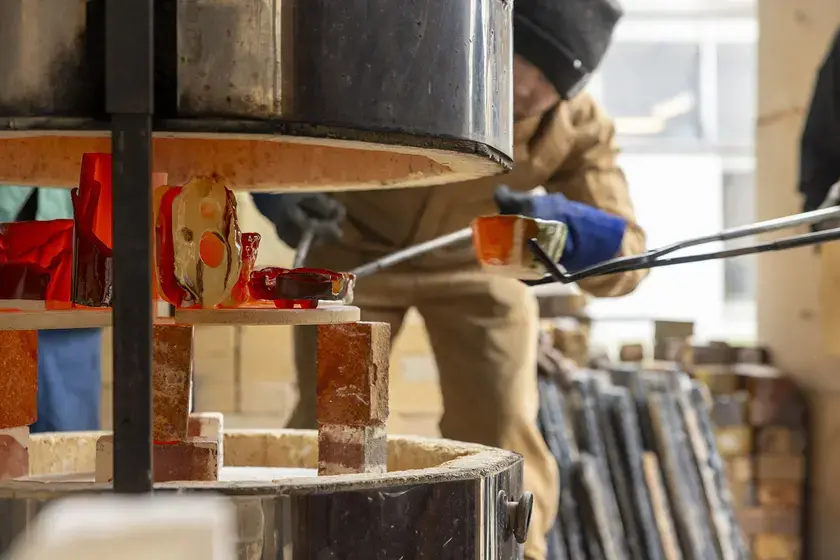
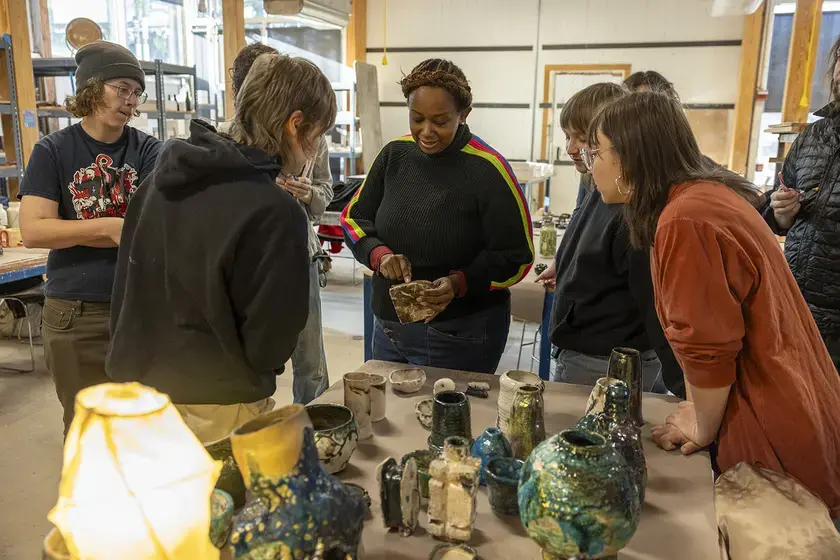
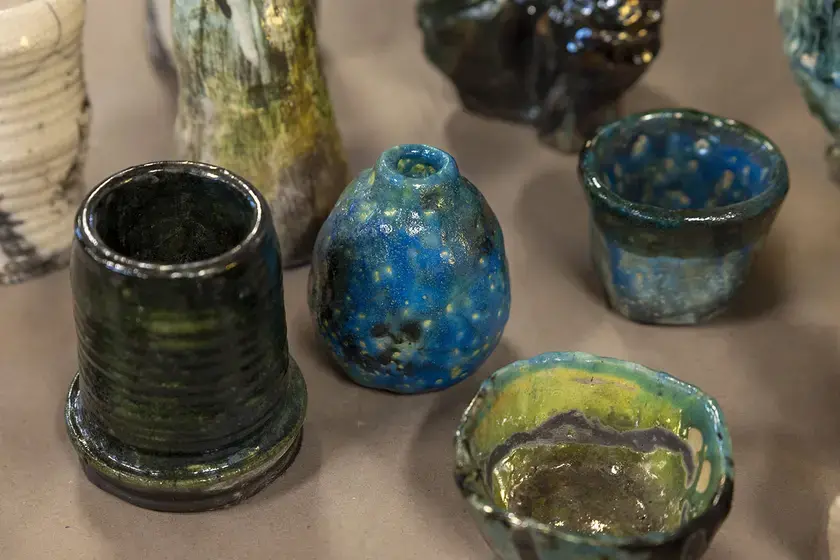
Roz’s Cafe
Roz’s, Bennington’s student-operated cafe, is a typical coffee spot in many ways. It’s where the campus community goes to meet up and find fresh-baked pastries, coffee, specialty espresso beverages, and snacks.
It’s unusual for a cafe in one way in particular: there is very little waste. Baristas serve drinks exclusively in reusable mugs and sell snacks in glass jars. There are no plastic or paper cups and no plastic lids. Paper bags and waxed paper are used to carry out pastries.
“The cafe serves as a visible, operating testament to the possibility of a plastic-free future,” said Judith Enck, president of Beyond Plastics, a groundbreaking environmental organization based within Bennington College’s Center for the Advancement of Public Action at Bennington. “We are not talking about a different world; we are making it.”
Being a low-waste cafe is easier than it seems. People bring their own mug. Others donate mugs to an ever-changing supply available to borrow. Patrons take a mug from a community shelf to use at the cafe. Often they use it again and again, and then return it to cafe, which then cleans it and returns it to the community shelf. The low-waste policy makes a cleaner world, but it also makes a more interesting and more connected one.
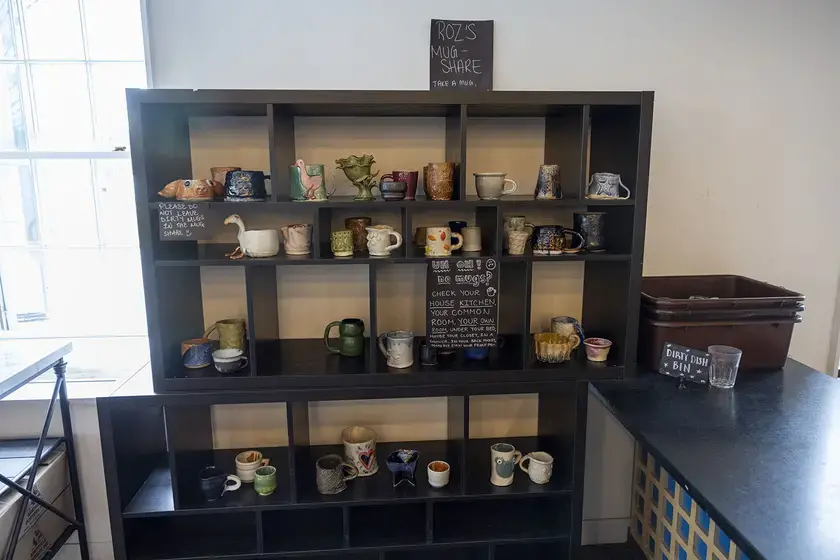
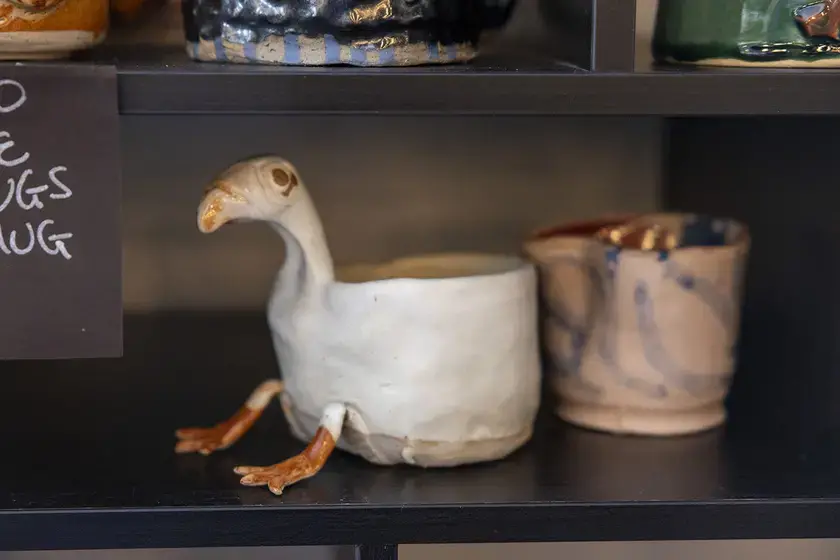
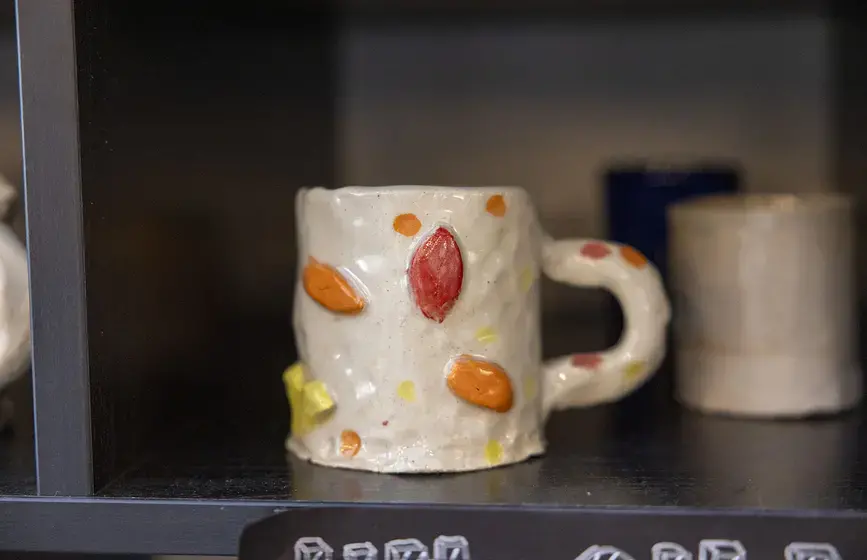
The Firing
Jump back in time to the chilly fall day when Ceramics faculty member Anina Major gathered students around a kiln. “Guys, if you’re curious about what glaze looks like when it is melting, this is as close as you will ever see it in real life,” she said. “During other types of firings you don’t get to see the glaze melt, because the kiln is closed.”
While making work is central to any ceramics study, practicing low-temperature firing techniques is the topic of this class. Students learn to operate the kilns used for the initial bisque firing. They glaze and fire again using an array of experimental methods. The class covers raku, reduction firing, pit firing, and Saggar firing.
“So during the beginning part of the term, we make a lot of stuff that students are going to test fire in different ways,” said Major. “Today is raku day.”
Raku is a type of atmospheric firing. Students open the kiln when the glazes look melted and shiny, “like molasses,” Major said. They use long-handled tongs to lift each piece from the kiln. A second student opens the lid of a metal bin with sawdust in the bottom. They put the piece into the bin, cover it with hay, and quickly close the lid while the hay combusts. Once the bins are fully loaded with work, they are allowed to cool.
Unlike wood firing, which can take as long as five days, Major explained, “[Raku firing] is immediately satisfying because the things that we glaze and fire today will be ready shortly after we are done firing.”
In the time between when the pieces are placed into bins and when they can be removed, the class waits. They have just enough time to watch The Great Pottery Throw Down “Raku Episode” and eat a homemade cobbler that they cooked in the hand-built outdoor pizza oven nearby.
“Anina’s class is amazing,” said Nico Migdal ’25, who studies dance, animation, and ceramics. “You get exposed to a lot of new things. Ceramic spaces and materials are so hard to access once you’re not in a school environment. Having access to all of the equipment, all of the techniques is really special.”
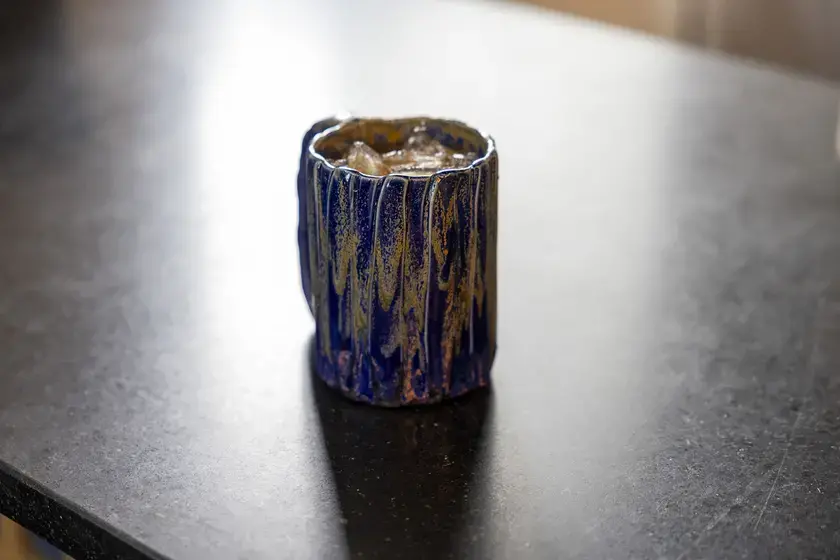
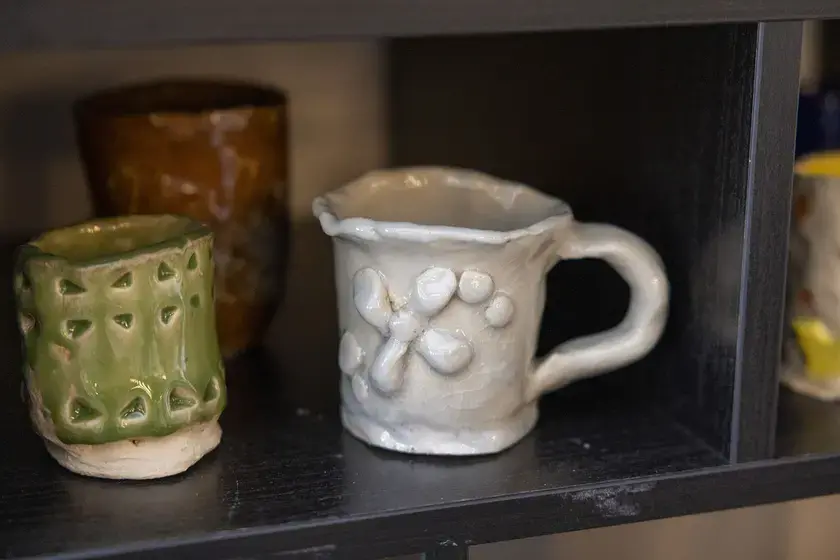

The Mugs
Back inside, students showed off the finished mugs they made. They represent the full range of shapes and sizes, from those that might hold a giant latte to those that would be more appropriate for an espresso. They are muted and iridescent, thrown and hand-built, smooth and textured.
Julia Henck ’24, who studies art history, anthropology, and ceramics, often makes sculptural, rather than functional, pieces. Speaking of her mugs, she said, “They are a little bit rougher in terms of dishware, but I like them. They still have some texture on the outside.”
Zee Camp ’26 studies Japanese and ceramics and likes to make mugs in fun aquatic-inspired shapes. They made two in the shapes of a whale and a fish. They look forward to other students using their mugs. “I think it’s fun and exciting,” they said. “[Students] can drink out of them and feel how [the mug] feels in their mouth and in their hand. And then we’ll have people using things—walking around with things—we made.”
On a cloudy early spring day, Roz’s was buzzing in a way that made it seem that students were every bit as excited to use the mugs as their creators were to share them. The mugs had been quietly delivered to the mug share shelf. Students were hanging around looking at the new arrivals and making comments about their favorites. “I haven’t seen the shelf this full in a long time,” said Daisy Billington ’24, who studies visual arts. “As a ceramics student, it’s exciting to see everyone’s work in the cafe.”
Another student, Luce Magsamen-Hillerbrand ’26, wandered up. A friend who worked at the cafe had sent them a photo of “the cool duck mugs,” they said. “I wanted to come and see.”
Second-term students Ruby and Kate were sitting in the southeast corner of the cafe and had already ordered drinks in the class’s handmade mugs. “We saw them when we came in. I thought, 'I can’t wait to use these handmade mugs; they feel so personal,'” said Ruby. Kate added, “I like the thought of having student art being used in a public space.”
Ruby continued, “Especially because it seems like they should be on display; they are so beautiful. We get to put them to use, which is so special. It makes you want to come here more, just to use the mugs.”